
Guests
- Lawrence Colburnhelicopter gunner serving with Hugh Thompson in the Vietnam War. On March 16, 1968 he helped rescue residents of the Vietnamese village of My Lai as American troops gunned down hundreds of civilians.
We look at the life of Hugh Thompson–the former Army helicopter pilot who helped stop the My Lai Massacre in 1968 when U.S. troops slaughtered hundreds of innocent Vietnamese villagers. He died earlier this month at the age of 62. We play an excerpt of a documentary about his life and we speak with former Army Specialist Lawrence Colburn who helped Thompson end the massacre. [includes rush transcript]
We turn now to another American figure of the Vietnam War–Hugh Thompson. As a helicopter pilot, he helped rescue Vietnamese civilians from fellow U.S. troops during the infamous My Lai massacre. Hugh Thompson died last week of cancer. He was 62 years old.
On March 16, 1968, Thompson and two other crewmembers landed their helicopter in front of U.S. troops firing on Vietnamese civilians in the village of My Lai. They pointed their guns at their fellow service members to prevent more killings, and helped evacuate the villagers. In a few minutes, we are going to be joined by one of Thompson’s crewmembers. First, we take a look at what happened on March 16th, 1968 by playing an edited excerpt from a documentary produced by Mike Boehm titled “The Sound of the Violin in My Lai.”
Thompson and Lawrence Colburn later testified at the court martial hearings for the massacre of over 300 civilians at My Lai. Only one U.S. soldier, platoon commander Lieutenant William Calley, was convicted. He was court-martialed and sentenced to life in prison for his role in the massacre. Many around the country viewed Calley as a scapegoat. “Rallies for Calley” were held all over the country and Jimmy Carter, then governor of Georgia, urged citizens to leave car headlights on to show support for Calley. President Richard Nixon later commuted Calley’s sentence to three years of house arrest.
Thompson, on the other hand, was shunned for years by fellow soldiers. He received death threats and was once told by a congressman that he was the only American who should be punished over My Lai. Although the My Lai massacre became one of the most infamous atrocities of the Vietnam War, little was known about Hugh Thompson’s actions for decades.
In 1998, Thompson and his two crewmembers, Lawrence Colburn and Glenn Andreotta, were awarded the Soldier’s Medal, the highest US military award for bravery not involving conflict with an enemy. Andreotta’s award was posthumous. He was killed in Vietnam less than a month after My Lai.
Thompson passed away last week after a prolonged battle with cancer. Lawrence Colburn was at his bedside when he died.
Transcript
AMY GOODMAN: We turn now to another American figure of the Vietnam War: Hugh Thompson. As a helicopter pilot, he helped rescue Vietnamese civilians from fellow U.S. troops during the My Lai massacre. Hugh Thompson died last week of cancer. He was 62 years old. On March 16, 1968, Thompson and two other crew members landed their helicopter in front of U.S. troops firing on Vietnamese civilians in the village of My Lai. They pointed their guns at their fellow service members to prevent more killing and helped evacuate the villagers. In a few minutes, we’ll be joined by one of Thompson’s crew members, but first, we take a look at exactly what happened on that day, March 16, 1968. We turn to an edited excerpt of a documentary directed by Tran Van Thuy and produced by Mike Boehm called The Sound of the Violin in My Lai.
NARRATOR: Hugh Thompson was a helicopter pilot in the U.S. Army. Lawrence Colburn, a door gunner, and Glenn Andreotta, a navigator. They were flying over this field in the morning of March 16, 1968. From above, they looked down and just couldn’t believe what they saw. The American soldiers were herding the village women and children into a ditch and opened fire on them. Shocked, the team flew to the village. Thompson saw a little [inaudible] girl in the field. He dropped a smoke flare for medical assistance. A U.S. captain ran to the place and shot her dead.
Then they saw a group of American soldiers chasing about ten farmers. They landed the helicopter right in front of the pursuing soldiers. Thompson ordered the door gunner to point his machine gun at the soldiers and said that he would shoot if the soldiers moved forward. Then Thompson ordered two rear helicopters to land and get the farmers to safety.
When the crew flew along a ditch, Andreotta saw something moving along a heap of dead bodies. Thompson landed his helicopter. Andreotta waded through the bodies and picked up a little boy all covered in blood, but who was still alive. They took him to Quan Nai hospital.
That year Colburn was only 19, and Thompson was 25. According to the American media, in 1969, Thompson refused to take a Flying Cross medal because he thought that the U.S. Army wanted to buy his silence. 30 years later, the U.S. government did the right thing. They respectfully awarded the Soldier’s Medal to Thompson, Colburn and Andreotta for their bravery. Andreotta did not live to get his medal. He died in a battle just three weeks after he had saved the little boy.
The only American casualty on that day was a black soldier, Herbert Carter, who could not stand such mad killing. He shot himself in the foot so that he could not have to take part in the massacre. Herbert later related, “I saw an old man standing in the middle of the rice field waving at us in a friendly manner, but they shot him. I saw no Viet Cong in the village, only poor farmers running away from their burning huts, and then they shot them dead.”
Mrs. Le is lucky. She was one of the rare survivors of the massacre. This is the memorial still held for 102 people, mostly women and children who were killed along this road that day. Haeberle’s nervous system must have been made of steel to be able to take these pictures. A baby was killed, still hanging on its dead mother’s breast. Mrs. Le and her son were spared because they buried themselves under the bodies of three or four villagers. Nearby, her nephew, Chung Bo, was laying on top of his brother, Chung Nam, to shield him from the bullets. Both of them were killed. Mrs. Nhung and Sister Nhanh are also survivors of the massacre, but their survival was somewhat special. They were saved by the helicopter crew: Hugh Thompson, Larry Colburn and Glenn Andreotta.
PHAM TI NHUNG: We survived because these Americans waved to us and took us on their helicopter. Thanks to them, I’m still alive today.
PHAM THI NHANH: They shot like madmen. When they came, I ran for the shelter. A helicopter landed near us. The men waved, and we came out. They pushed us onto the ship and took off. We were dead scared. Were they going to drop us into the sea? After some time, the helicopter landed, and they signaled us to run away. It was only then that we knew we had been saved.
HUGH THOMPSON: There was a lot of anger and anger that was not directed at the Vietnamese people, it was directed at my fellow soldiers who went crazy that day. I’m just real sorry that my crew could not have done more. I’m extremely sorry for my fellow Americans for what happened. It wasn’t right. It wasn’t war. And I pray to God something like this never happens again.
AMY GOODMAN: Hugh Thompson in an edited excerpt from the documentary The Sound of the Violin in My Lai, produced by Mike Boehm and directed by Tran Van Thuy. Thompson and Lawrence Colburn later testified at the court martial hearings for the massacre over 300 civilians at My Lai. Only one U.S. soldier, platoon commander Lieutenant William Calley, was convicted. He was court-martialed and sentenced to life in prison for his role in the massacre. Many around the country viewed Calley as a scapegoat. Rallies for Calley were held all over the country, and Jimmy Carter, then the Governor of Georgia, urged citizens to leave car headlights on to show support for him. President Richard Nixon later commuted Calley’s sentence to three years house arrest.
Thompson on the other hand, was shunned for years by fellow soldiers. He received death threats and was once told by a Congress member that he was the only American who should be punished over My Lai. Although the My Lai massacre became one of the most infamous atrocities of the Vietnam War, little was known about Hugh Thompson’s actions for decades. In 1998, Thompson and his two crew members, Lawrence Colburn and Glenn Andreotta, were awarded the Soldier’s Medal, the highest military award for bravery not involving conflict with an enemy. Andreotta’s award was posthumous. He was killed in Vietnam less than a month after My Lai. Thompson died last week after a prolonged battle with cancer. Lawrence Colburn was at his bedside when he died. He joins us now from a studio in Atlanta. Welcome to Democracy Now!, Larry Colburn.
LAWRENCE COLBURN: Good morning, Amy.
AMY GOODMAN: It’s good to have you with us. As we go back to that infamous day, can you tell us, from your perspective flying in the helicopter, what happened, what you saw below?
LAWRENCE COLBURN: Well, early in the morning we were one of the first American units on station ahead of the Americans that would be inserted on the ground. And it started out as a routine air support and reconnaissance mission, but as the day progressed, we noticed obviously that we weren’t receiving any fire. Our job was to fly low level and try to entice people into giving up their positions by firing on us. And that wasn’t happening.
We saw people leaving the village. It was a Saturday morning, so it wasn’t uncommon for the people to go to market on Saturday morning. So we thought it was good that these women and children and elderly people were leaving the area. And as we progressed around the perimeter of the area that the troops were being inserted into, we found nothing, as far as resistance. At some point we had to go refuel. And it was so quiet that morning that we didn’t even call a backup team to cover us while we were refueling.
And then when we came back from refueling, we started finding the same people that were leaving the area on the road out of the village were now dead on the road and in the ditches. And Mr. Thompson tried to piece together different scenarios. He knew it wasn’t artillery because that had happened earlier in the morning. There were other gunships on station. But they weren’t firing on the villagers. Finally, after marking a few bodies with smoke for medical assistance, we witnessed a captain approach a wounded woman and walked up to her and kicked her with his foot, stepped back and blew her away. Then we realized what was going on and exactly who was doing the killing.
AMY GOODMAN: And so, what did you do?
LAWRENCE COLBURN: Mr. Thompson landed by the ditch, where there were probably 150, 200 people dead or dying. There was an American soldier standing there. We actually landed the aircraft, because the communication was so bad. He physically got out of the aircraft, went over and spoke to the soldier and explained to him these were obviously civilians. There were no weapons captured. There were no draft age males. These were civilians. We need to help them out. And the soldier agreed and said he’d help them out, and as we lifted off again, we heard automatic weapons fire, and he was firing into the ditch again.
So at that point, Glenn Andreotta spotted an earthen-type bunker with some faces peering out of it. And there was an approaching squad of Americans. And we — Mr. Thompson decided, and we all decided that if we didn’t do something within the next 30 seconds, these people would die. So he landed the aircraft in between the advancing American troops and the people in the bunker, went over and spoke to a lieutenant and told him — or asked him how we could get these people out of the bunker. They were obviously civilians. And the lieutenant replied he’d get them out with hand grenades.
Mr. Thompson, who was outranked by this lieutenant, actually gave the lieutenant an order, told him to keep his people in place. He had a better idea, and I think he told him, “If you fire on these people when I’m getting them out of the bunker, my people will fire on you.” So he went over to the bunker himself and coaxed the villagers out. And we thought there were two or three. There were nine or ten, and we were in a small three-place helicopter, and all three seats were occupied. So we had to call down a gunship and use it as a medevac to remove these people from the area, take them down the road and then the gunship came back on station.
After that, we went back to the ditch. Glenn Andreotta spotted movement in the ditch. Mr. Thompson landed again. Glenn and I got out of the aircraft, went to the ditch. By the time I got there, Glenn was already in the ditch. He retrieved a small child and handed the child up to me, and we carried the child to a hospital orphanage a few miles away. And Mr. Thompson left the child with a nun and let her know that his family was probably all gone, so take care of him.
AMY GOODMAN: You were with Hugh Thompson at his bedside when he died?
LAWRENCE COLBURN: Yes, ma’am.
AMY GOODMAN: And you’re the last of the three of you surviving. Glenn Andreotta died in Vietnam right after My Lai. Your thoughts today about the action you took, just in introducing you, talking about the Congress member saying to Hugh Thompson, “You’re the only one that should be prosecuted for My Lai.”
LAWRENCE COLBURN: I believe that was Mendel Rivers. Well, it had a toll on Hugh. He was tormented by not only My Lai, but the way he was treated when he just told the truth and did what was morally right. People came after him and tried to discredit him. He was ostracized in the military, but he never turned his back on them. He stayed in the military. His message would be how important it is to maintain integrity and honor and honesty within the ranks of the military.
AMY GOODMAN: You returned with Hugh Thompson, you returned to Vietnam. You returned to My Lai and the whole area, and you met with the survivors, the people that you saved.
LAWRENCE COLBURN: Yes, and their offspring. Yes.
AMY GOODMAN: Can you talk about what that was like?
LAWRENCE COLBURN: If there was any gratification, it would have been that, to see that people actually did survive, and they carried on and continued their families. We were also reunited with the boy from the ditch in 2001, which was incredible that they were able to find this boy. I prayed over the years that he was too young to remember or too traumatized to remember what had happened. But I misjudged his age. He was so small. He was eight years old. I thought he was four or five. And he remembered everything. We quizzed him a little bit, and only he could remember what happened, so we know it was the same boy.
AMY GOODMAN: Larry Colburn, we read in the headlines at the top of the program about a 55-year-old former Marine who’s been arrested for avoiding military service in the Vietnam War. His name is Ernest McQueen, born Ernest Johnson, Jr., fled his North Carolina military base in 1969, over 36 years ago. He told the Fort Worth Star Telegram on Monday that his desertion was motivated by news of the My Lai massacre. He now sits in a jail in Texas. Your thoughts about him?
LAWRENCE COLBURN: I didn’t know about that. I thought there was a blanket amnesty back in the 1970s, Jimmy Carter administration. Wouldn’t he fall into that category somehow? This is news to me.
AMY GOODMAN: Well, he’s now in current — he’s in military custody, could face up to three years in jail. He said, “I just decided I didn’t want to be part of killing anybody. That’s as plain as I can say it,” he said.
LAWRENCE COLBURN: Well, if he — he probably should have gone conscientious objector and possibly avoided this later on. I’d like to be in contact with him, if I could.
AMY GOODMAN: Well, we’ll give you whatever information we have after the show. Finally, I wanted to ask, as you see what’s happening in Iraq, as you see the photos from Abu Ghraib, hear about Guantanamo, what are your thoughts from your experience in Vietnam and dealing with, well, fellow U.S. soldiers at My Lai?
LAWRENCE COLBURN: Well, if I were to continue on where Eugene McCarthy left off, we were warned about the military-industrial complex. It almost sounds cliché now to bring it up. But we’re actually living it now. When we’ve taken resources away from social programs, health care, education, and all of those resources are directed toward defense, that’s the way the country is going to go. And if — until the social elite have to send their own children to war, things won’t change. They’re good at sending other people’s children to war. But if they had to send their own, we may not be where we are now.
AMY GOODMAN: Larry Colburn, I want to thank you very much for being with us. Larry Colburn, a helicopter gunner serving with Hugh Thompson in the Vietnam War; March 16, 1968, helped rescue residents of the Vietnamese village of My Lai, as U.S. troops gunned down civilians there, speaking us to from Atlanta.

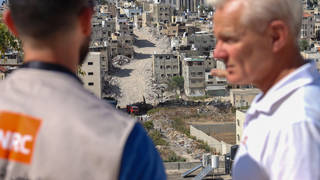
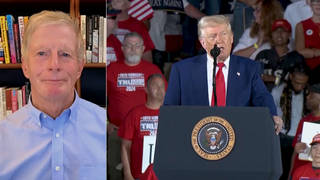
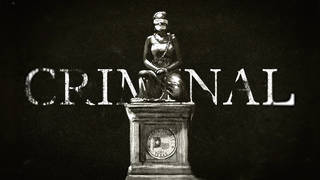
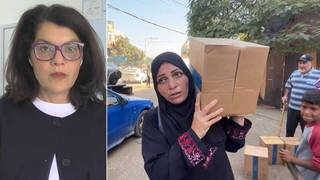





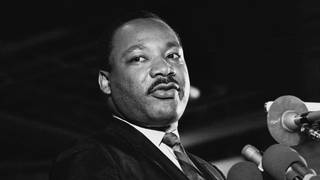
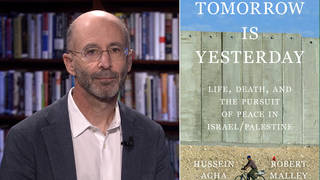
Media Options